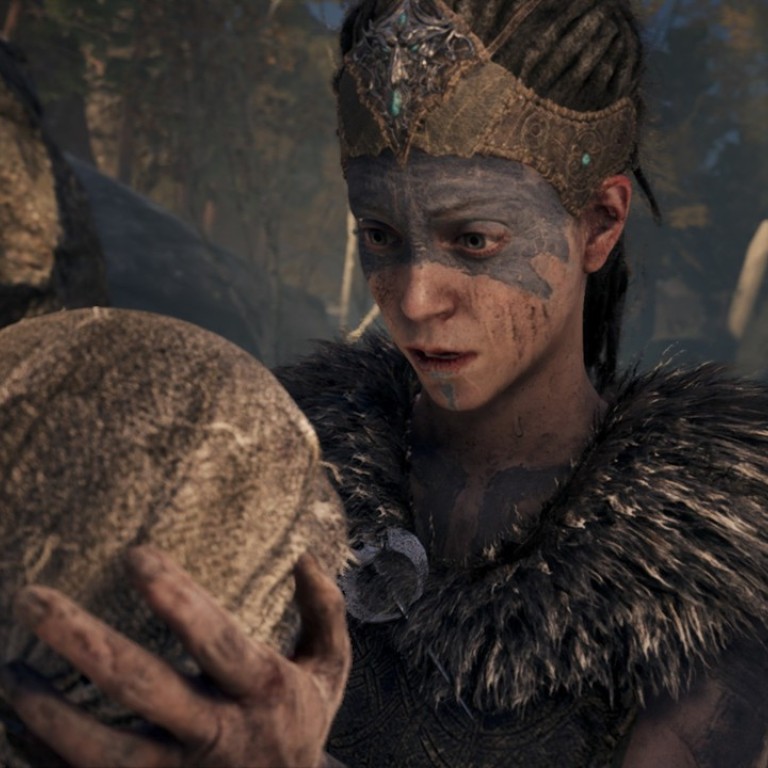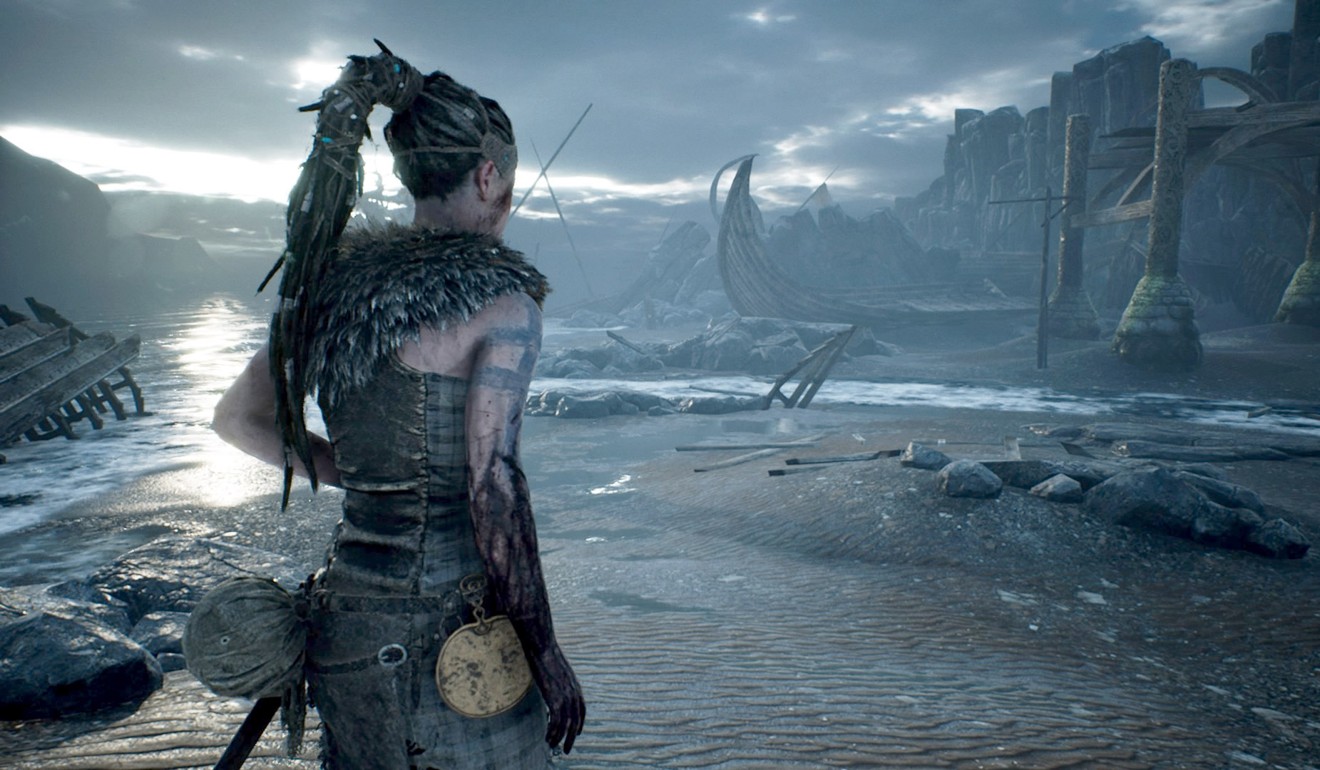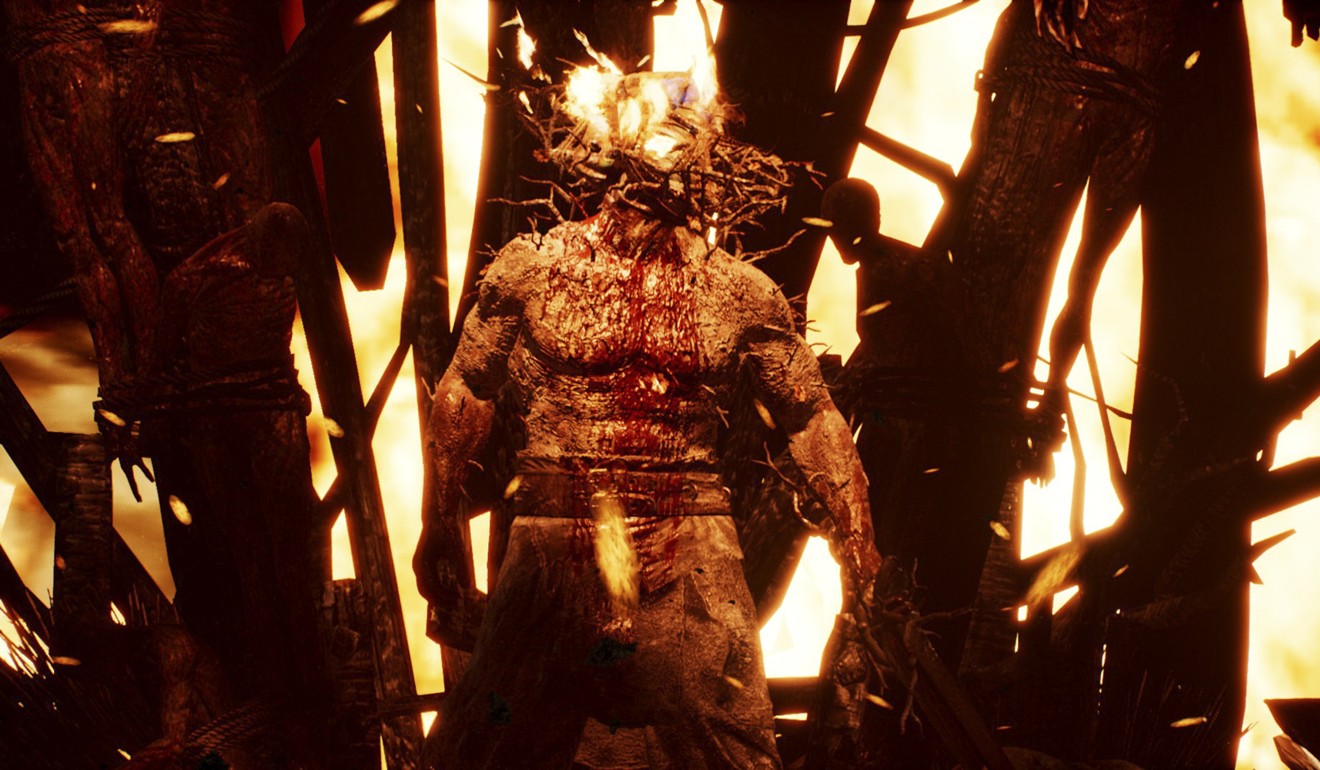
Game review – Hellblade: Senua’s Sacrifice – mental illness and psychosis themes create an experience like no other
Charting the quest of a young, mentally tormented warrior woman, Hellblade: Senua’s Sacrifice is bursting with emotional intensity thanks to its strong acting, realistic visuals and mesmerising narration from Chipo Chung
Hellblade: Senua’s Sacrifice
Ninja Theory
4/5 stars
We are all prisoners of our minds to some extent, some of us more so than others. To this end, Hellblade: Senua’s Sacrifice opens with a notification: “This game contains representations of psychosis. People with experience of psychosis as well as professionals in psychiatry have assisted in these depictions.”
The game (available on PS4 and PC) tells the story of Celtic warrior Senua, a young, mentally tormented woman who goes on a quest to retrieve her lover from the underworld. Although it revolves around a character who suffers from auditory hallucinations and delusional thoughts, Hellblade will resonate with many who have dealt with chronic depression, paranoia and other mental health issues.
Game review: Tacoma, by makers of Gone Home, takes voyeuristic storytelling into space
From its opening scene, which calls to mind the journey up a foreboding river in Joseph Conrad’s Heart of Darkness, I was struck by the game’s production values. As Senua paddles her way through a fog-laden landscape in a dugout, the narrator, voiced by Chipo Chung, introduces us to her and the voices she hears.
Chung’s mellifluous narration is as mesmerising as any I have heard in a video game – fully on par with the voice work of Linda Hunt in the God of War series and Logan Cunningham in Bastion and Transistor. When Chung says: “This is a journey deep into darkness. There will be no more stories after this one,” she imbues the lines with a pathos that would come across as silly if voiced by a less-skilled actor.

The performance of Senua herself, played by Ninja Theory’s video editor Melina Juergens, feels less controlled. When Senua can no longer bear the voices swirling around her, mocking and hectoring her, she looks unflatteringly discombobulated. When she falters in a fight and struggles to regain her footing, she appears as though she is summoning every last iota of strength to defend herself. Her displays of anguish, of which there are plenty, are operatic, without being cloying.
UK studio Ninja Theory, based in Cambridge, is small in comparison to many of the blockbuster specialists in the industry. With Hellblad e, however, it is paving the way for lower-cost motion capture technology. This technology allows actors to have their digital likenesses integrated into a game’s graphics engine in real-time. An actor can have a different face and body altogether in-game, while retaining the expressive nuances that they bring to the table.
Super Mario Odyssey: game preview suggests another Nintendo Switch contender for year’s best title
Because the developers do not have to wait for long periods to see how an actor’s performance meshes with their game world – as has been the case for most of the industry since the advent of motion-capture technology – the cutscenes feel more organic than in most games that depict physical traits of human actors. (Here, I can’t help but think of the Call of Duty series.)
In terms of gameplay, Hellblade sticks to the old combat and puzzle-solving formula. Yet, what saves these elements from being wholly conventional is how they affect and illuminate Senua’s mental state. Fail in battle or in overcoming environmental challenges too many times and a flesh-rotting disease will gradually spread up her arm to her head, resulting in “permadeath” whereby the player’s save file is deleted.

If you are unwary of courting such risks, you could always upload your save file to the cloud if you are playing on PS4, or download it to a USB stick if you are on a PC. Obviously, though, you would miss the frisson that comes from negotiating higher stakes.
The puzzles serve not only as palate cleansers between action sequences, but also to underscore Senua’s determination to find secret correspondences in her surroundings via her own unique way of looking at things.

The game looks stunning. However, there are cracks that appear intermittently that can somewhat mar the illusion. Occasional pop-in graphics are noticeable on the standard PS4, and when you swivel the camera in front of Senua while she is standing still, she swivels her head back and forth like a marionette.
Moreover, close to the end of the game, I believe I committed a game-breaking error.
There is a part where you need a torch to solve a certain puzzle, which I foolishly left behind after Senua dropped it in battle. After making my way to the puzzle and having the game autosave behind me, I could not return to where I dropped it.

I’m not sure if the developers meant to illustrate another cruel trick that Senua’s mind played on her, but with nothing in her hand she held her arm aloft while a faint trail of smoke flickered in the air. Even if this was a fluke, I like to imagine the game found an exquisite way to mess with me that was consistent with its overall evocation of heartbreak.
Inside the boss-less world of video game giant Valve
In any case, few mainstream video games have tried, let alone achieved, anything close to the emotional intensity that courses through this game.

